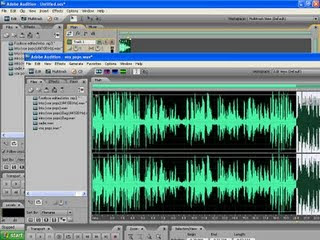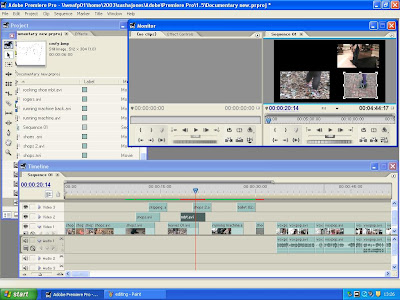As well as produce the actual documentary, we had to produce a radio advert and a newspaper advert. To do this we started to look at different types of adverts as a class and come up with a simple code and conventions that they all face.
We came to the conclusion that all radio adverts:
Had extracts from the actual documentary
Voice over from the documentary – often clips of the voice over in the documentary but others that added still to be done using the same voice. Often the voice over would be questions causing an enigma code so that the listeners would have to watch the documentary to find out the answer.
The time of the documentary
The channel that is it going to be on
Radio adverts of often kept short and quick so the audience isn’t bored it last no longer the 50 seconds
There is often music in the background that will either feature on the documentary or have a relevant to the subject.
Here are the radio adverts that we listened to:
We came to the conclusion that all newpaper adverts:
Have a main central image that is very eye catching and the mise en scene of the image is relevant to the subject of the magazine. This image will often make you thing as it is different making you want to watch the advert.
There is little text on the advert often just the time and the date then maybe even a tagline to make you think again making you what to watch the documentary.
They always have the logo of the channel in stead of saying what channel it is on as people know all the different logos.
It also has the scheduling of the program on it.
Here is the website that we looked at for the newspaper advert: http://www.4creative.co.uk/flash/#/keywords/print_ad/factual_cutting_edge_storm_junkies
To get all of this work done we split you can each took on a different section. After coming up with each of the ideas and planning them together we each went of and produced the work, asking for advice and checking with each other along the way.
Ideas
For the new paper advert we came up with the idea of having a big shoe image that was made up of little shoes inside of it. As if would be effective and eye catchy to look at. Then have the channel for logo and the time and date in the bottom cocner and have the title of the documentary at the top. We decided to do it like this as it is known as a teaser advert as it is teasing the audience as they aren’t getting much information making them want to go an watch the documentary to find out. We also did it like this as after looking at different example the channel for adverts were mostly like this and as are documentary is going to be on channel four we decided to follow their code and conventions.
Here are the deigns that were planned for this advert.


For are radio advert we decide that we were mostly going to use clips from the documentary and the main clips that we wanted to use were the voxpops as it shows the listener that is a documentary done for the public as the public are being featured in it. Also we decide as it was little clips of footage it would be fast and funky and young sounding which is the idea that we are going for. We also decided on using fast pace music to keep up with this theme.
This is the edit decision list that we did for the radio so who ever was to do it would remember what we had decide on and be able to find the exact footage of the documentary. We also planned out the voice over script that we would to get off the footage and other things that would need to be recored.  Voice Over for Radio Advert
Voice Over for Radio Advert
-Shoes are they the new drug of choice?Is wearing the hottest new pair of designer heels addictive? (an addiction?)
-What is it exactly that hooks us in the shoe depertament? Is it comfort, fashion or just basic necessity? -Men, women, boys and girls- we all wear them?
-Comfy Funky and Essential. Thursday. 9 0'clock. Channel 4.
-Take a walk in our shoes..... -Where did they originate? Where are they going?
The production work
As at this point we had everything decided on we split the work to get it done quicker. Sasha did the newspaper advert and Whitney did the radio advert while I added the finshing touches to the editing of the documentary checking sound levels, checking cut away and making sure that all transitions moved smoothly.
For the print advert that Sasha was doing she went onto the following website to produce a example the main image to show the rest of the group and check that we think it would still suit are audience. This is the website that Sasha used to created the example image.http://www.polyvore.com/ below is some work in process of making the example.

After doing this and seeing the example image we all decide that it was the image we were going to go ahead with. We then went out and took different images of different types and styles of shoes to then create the over all image in Photoshop. After cutting out all of the individual images of shoes and laying them out in the right position, Sasha then added the channel four logo, and the time and the date of the documentary to the advert. She added a block around the time and date as while research into different articles we found this was a common factor in all channel fours adverts.


For the radio advert that Whitney produced, she edit the sound away from the actual footage of the documentary to make an advert. She then imported the different sounds into Adobe Audition. She kept to the editing decision list that we decide on and kept playing it aloud to the rest of group while working to check we liked it. Also she had to play around with the different sound levels checking the listener would be able to hear everything clearly without having to adjust the sound when listening. We arranged for the recording of the voice over to be recorded It was then added to complete the advert and tie it all together.
Below are some print screens of the radio advert work in process.















 For this shot we held the camera still and turned it around to get a panning shot of the shop Office.
For this shot we held the camera still and turned it around to get a panning shot of the shop Office.


























